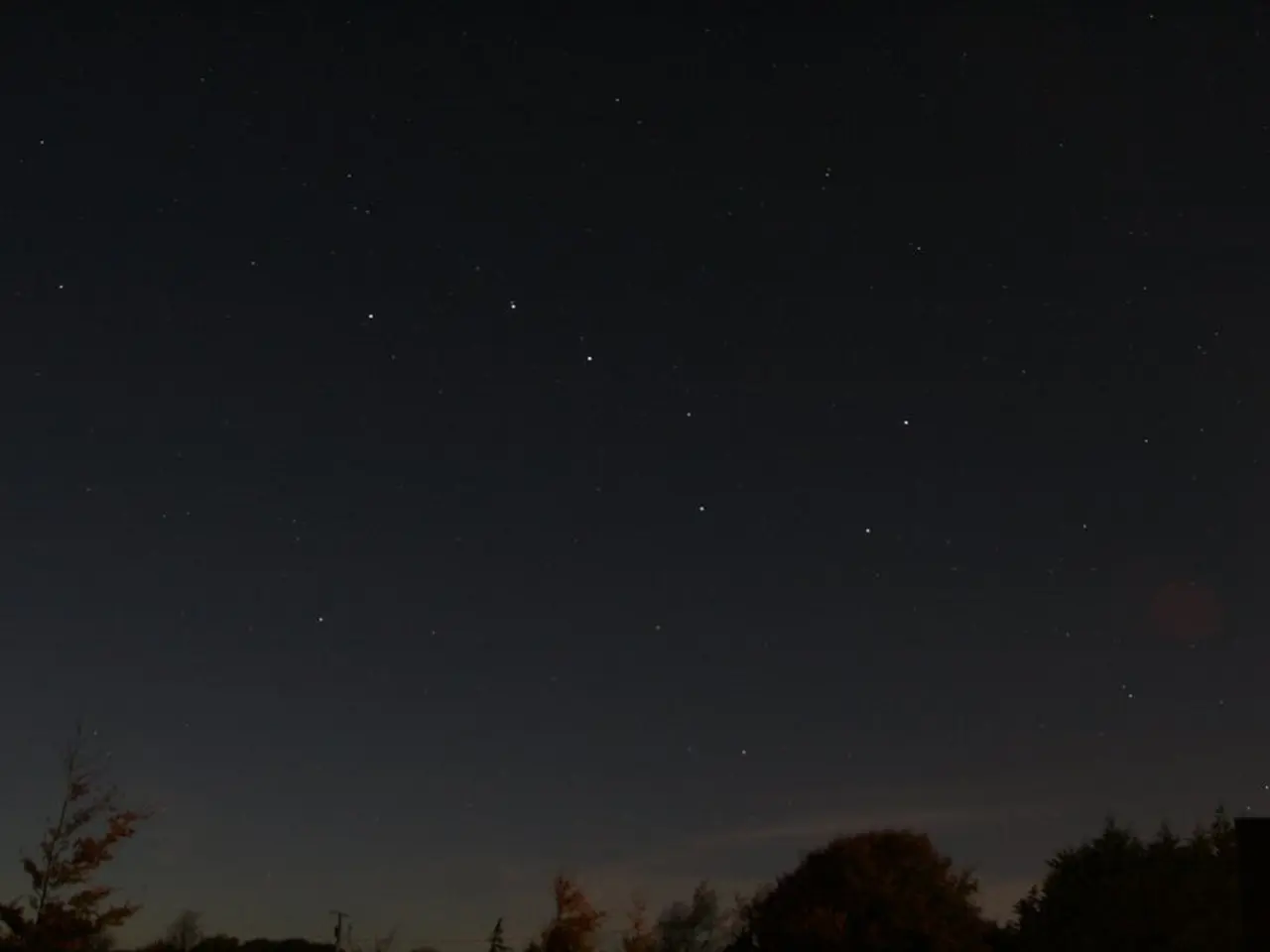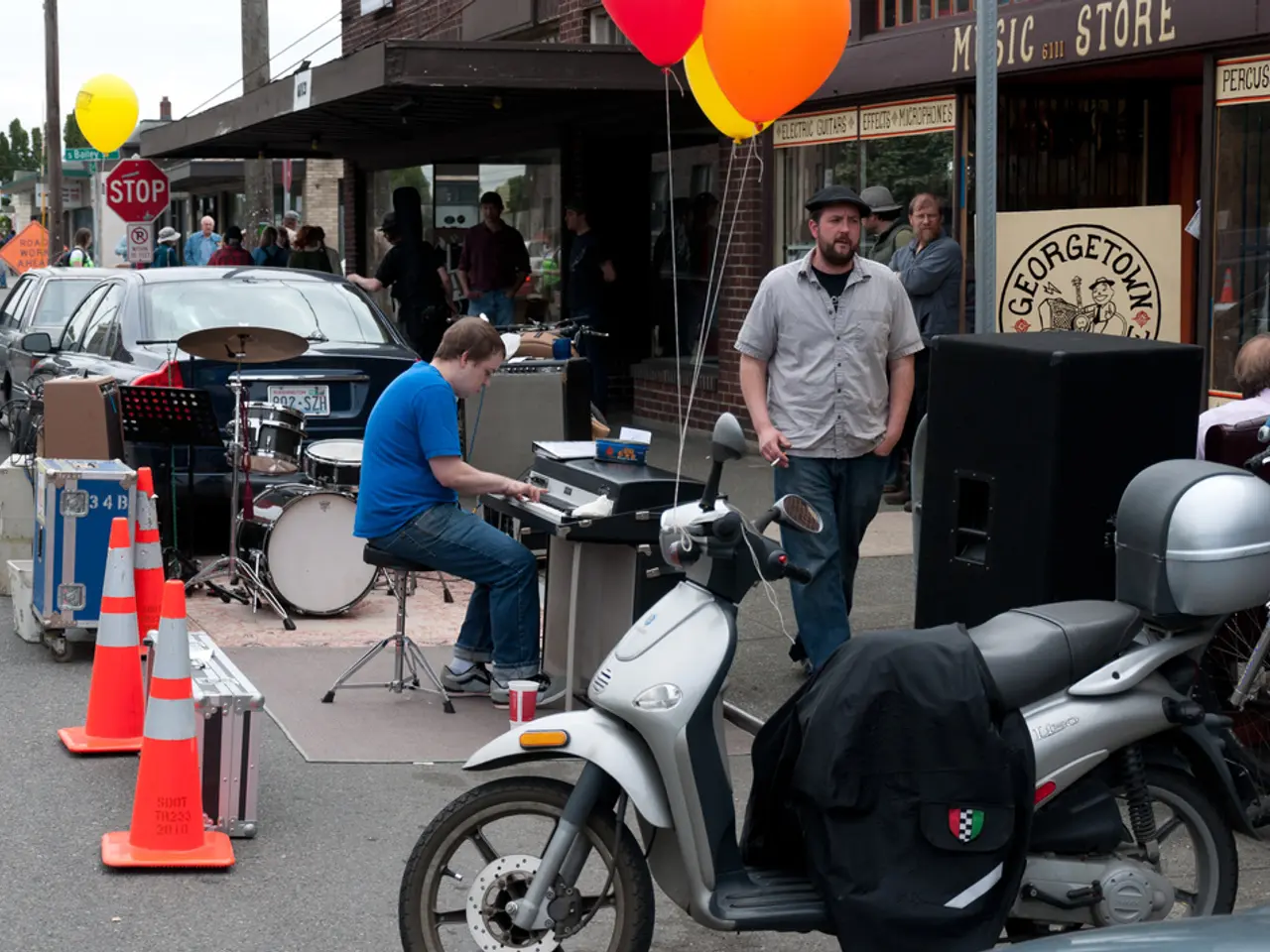Utilizing Astrophotography: Applying the 500 Rule for Optimal Exposure Settings
The 500 rule is a practical guideline for photographers, particularly those new to astrophotography, to estimate the maximum shutter speed needed to avoid star trails in their images. This rule, though originally developed for film cameras, remains widely used in digital astrophotography.
Calculating the Maximum Shutter Speed
To calculate the maximum shutter speed using the 500 rule, you simply divide 500 by the focal length of your lens (expressed in millimeters). The result gives you the maximum exposure time in seconds before star trails become noticeable.
For example, with a 24mm lens on a full-frame camera, you would have approximately 20.8 seconds of safe exposure time. Many photographers round down slightly for safety, such as using 18–20 seconds, to avoid any trailing or to accommodate cropping and printing needs.
For crop sensor cameras like APS-C or Micro Four Thirds, the formula is adjusted by multiplying the focal length by the crop factor before dividing 500. For instance, for an APS-C camera with a 35mm lens, the formula would be: 500 ÷ (35 × 1.5).
How the 500 Rule Helps
The 500 rule works by limiting exposure time so that the Earth's rotation does not cause stars to appear as trails or streaks in the image. Longer exposures cause stars to move across the sky relative to the camera, resulting in blurred or trailing points of light. By staying below the calculated maximum shutter speed, stars remain sharp points in the photo, creating a crisp night sky image.
Additional Details
The 500 rule is more accurate for wide-angle lenses (14-35mm) and full-frame sensors. High-resolution digital sensors may reveal more blur, so trial and error and slightly shorter exposures might be necessary. Lens sharpness and accurate focusing also affect star sharpness beyond shutter speed considerations.
Beyond the 500 Rule
For those serious about capturing deep sky objects, investing in a star tracker might be necessary. This device moves with the rotation of the Earth, allowing much longer exposures without trailing.
Other helpful tools include intervalometers, remote shutters, and phone apps that help you plan your shoots and calculate exposure times. These tools don't replace the 500 rule but can complement it.
Tips for Shooting the Night Sky
- Use a wide aperture and high ISO (e.g., f/2.8, ISO 3200) to gather as much light as possible.
- Use a 2-second timer or remote shutter release to avoid camera shake.
- Focus on a bright star using manual focus and magnifying the live view screen.
- Check your histogram and sharpness before moving on.
Limitations of the 500 Rule
The 500 rule doesn't account for pixel size or sensor resolution and isn't perfect due to modern high-resolution sensors. However, for beginners, it remains a quick, easy way to estimate how long your shutter can stay open without star trails, helping you capture sharp stars by compensating for Earth’s rotation.
[1] Astrophotography Tonight [2] Sky at Night Magazine [5] Adorama Learning Center
- Effective use of technology, such as apps designed for astrophotography, can help plan shoots and calculate exposure times, improving the final image and complementing the 500 rule.
- To capture deep sky objects that require longer exposures without star trails, it may be necessary to invest in high-end technology like a star tracker, which uses technology to move with Earth's rotation.




